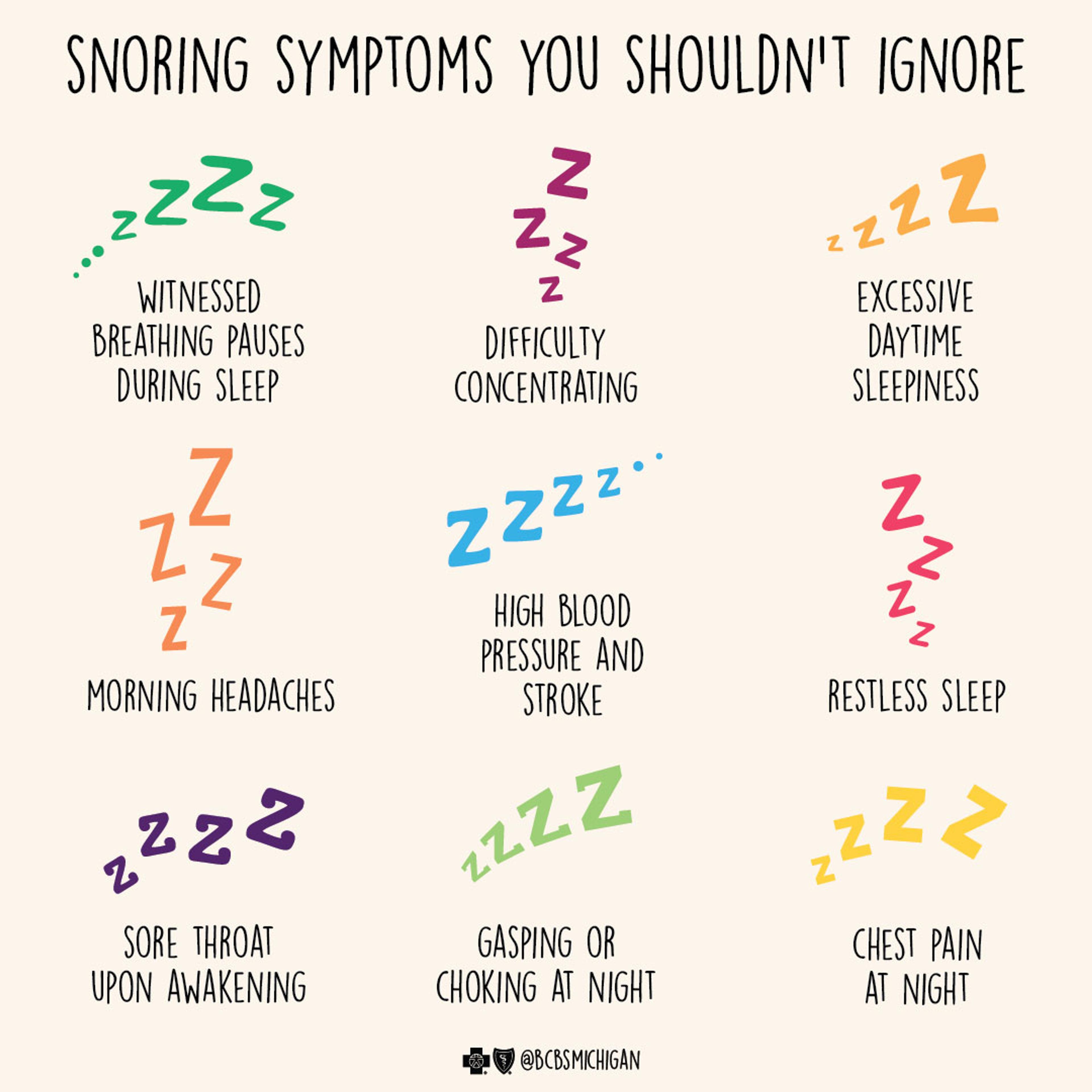The Difference Between Snoring and Sleep Apnea
Jake Newby
| 3 min read

Snoring can be an annoying nightly habit for you or the person you share a bed with, but it isn’t always an indicator of a serious health problem.
Snoring and sleep apnea share some characteristics, but they are not mutually exclusive. On the other hand, if your snoring is accompanied by certain symptoms, it might help to learn the difference between snoring and sleep apnea. That way, you can figure out whether to call your primary care physician.
What is sleep apnea?
Sleep apnea is a breathing disorder that occurs when breathing is interrupted during sleep. The two main types are obstructive sleep apnea (OSA) and central sleep apnea (CSA), with the former being much more common.
Airways are obstructed or blocked completely during OSA, which causes breathing to stop or slow down for seconds at a time. Internally, this disrupts the oxygen levels in the blood and carbon dioxide in the body. Externally, it can fragment our sleep, cause us to wake up multiple times a night, and make us tired the next day.

What causes snoring?
Snoring is caused by the rattling and vibration of tissues in the mouth, nose, and throat. As we sleep, the tissues in our throat relax, making them more prone to vibrating as air passes over them. When that air passes over them, that’s when that hoarse, harsh sound comes out.
The narrower your airway, the more forceful the airflow becomes. This type of forceful airflow leads to heavier tissue vibration and louder snoring. These conditions can affect the airway and cause snoring:
Alcohol or sedative drug use: Too much alcohol before bed can relax throat muscles and decrease your natural defenses against airway obstruction.
Anatomy of the mouth: Having a low, thick, soft palate can narrow your airway.
Obesity: People who are overweight may have extra tissues in the back of their throats that may narrow their airways
Nasal congestion: Chronic nasal congestion may contribute to snoring. Additionally, a deviated septum or even nasal polyps – which are small growths in the nose – can contribute, as well.
Sleeping on the back: Snoring is typically most frequent and loudest when sleeping on the back as gravity's effect on the throat narrows the airway.
Differences and similarities between snoring and sleep apnea
Unlike with OSA, snoring – as unpleasant as it may be for you and your partner – does not cause a drop in blood oxygen levels. Though it may leave you with a dry mouth and throat occasionally in the morning, snoring isn’t likely to affect your sleep quality the way sleep apnea does. Sleep apnea can cause fragmented sleep and cause you to wake up as many as a dozen times per night. This could leave you feeling fatigued the next day.
As previously mentioned, not all snorers have sleep apnea. But if your snoring is accompanied by any of the below symptoms, the Mayo Clinic recommends talking to your physician for further OSA evaluation.
- Witnessed breathing pauses during sleep
- Excessive daytime sleepiness
- Difficulty concentrating
- Morning headaches
- Sore throat upon awakening
- Restless sleep
- Gasping or choking at night
- High blood pressure and stroke
- Chest pain at night
- Your snoring is so loud it's disrupting your partner's sleep
- In children, poor attention span, behavioral issues, or poor performance in school
If your physician thinks your snoring may be linked to sleep apnea, you may need to have diagnostic testing done.
If the severity of your issue doesn’t exceed snoring, but you’d still like to get it under control, there are lifestyle changes you can make. Limiting alcohol consumption, sleeping on your side, maintaining a healthy weight, and reducing nasal congestion can reduce snoring. If you try these options and they don’t work for you, have a conversation with your physician about other routes you can take, like trying out an anti-snoring mouthpiece.
Photo credit: Getty Images





